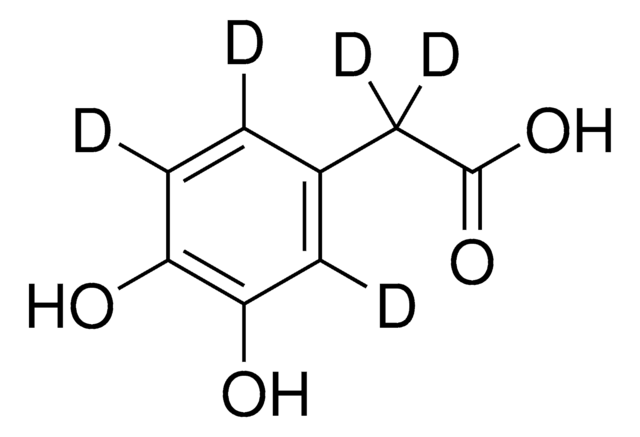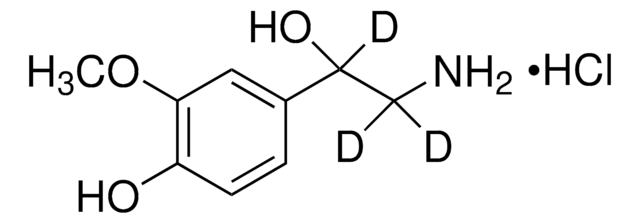M4251
3-Methoxytyramine hydrochloride
≥95.5%, crystalline
Synonym(s):
3-MT, 3-Methoxy-4-hydroxyphenethylamine hydrochloride, 4-(2-Aminoethyl)-2-methoxyphenol hydrochloride
About This Item
Recommended Products
Quality Level
assay
≥95.5%
form
crystalline
drug control
Home Office Schedule 1
color
white to light brown
mp
213-215 °C (lit.)
storage temp.
−20°C
SMILES string
Cl[H].COc1cc(CCN)ccc1O
InChI
1S/C9H13NO2.ClH/c1-12-9-6-7(4-5-10)2-3-8(9)11;/h2-3,6,11H,4-5,10H2,1H3;1H
InChI key
AWRIOTVUTPLWLF-UHFFFAOYSA-N
Looking for similar products? Visit Product Comparison Guide
Biochem/physiol Actions
Features and Benefits
Storage Class
11 - Combustible Solids
wgk_germany
WGK 3
flash_point_f
Not applicable
flash_point_c
Not applicable
ppe
dust mask type N95 (US), Eyeshields, Gloves
Choose from one of the most recent versions:
Certificates of Analysis (COA)
Don't see the Right Version?
If you require a particular version, you can look up a specific certificate by the Lot or Batch number.
Already Own This Product?
Find documentation for the products that you have recently purchased in the Document Library.
Customers Also Viewed
Our team of scientists has experience in all areas of research including Life Science, Material Science, Chemical Synthesis, Chromatography, Analytical and many others.
Contact Technical Service














